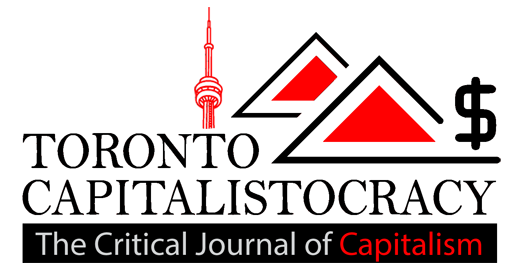Business
Broadcasters eye CRTC Netflix exemptions, push for parity

Broadcasters including Bell Media and Global TV owner Corus Entertainment appeared before the federal regulator over the past two weeks arguing for renewal of their operating licenses, but the name that kept coming up was nowhere near the hearing room.
Presentations from a number of over-the-air providers took note of the market impact of upstart, over-the-top, Internet-based streaming content companies, Los Gatos, Ca.-based Netflix in particular, which have grown by leaps and bounds in Canada but remain outside the regulatory framework.
During the two-week hearing to consider terms of renewal of television licenses held by large English- and French-language ownership groups, the legacy broadcasters said challenge from over-the-top (OTT) firms that offer content via the Internet has mounted since the last renewal process in 2011. And the broadcasters are asking for “flexibility” to help them continue investing in homegrown series such as Orphan Black and Rookie Blue.
“Consumer habits are changing, markets are colliding, boundaries have fallen and new digital technologies are constantly emerging,” Doug Murphy, CEO of Toronto-based Corus, told the hearing at Canadian Radio-television and Telecommunications Commission (CRTC) offices in Gatineau, Que.
“Old business models no longer apply or are fading in terms of their merits and relevance.”
Five years ago, Netflix had a few hundred thousand subscribers, but estimates now put it in more than five million Canadian homes, generating annual revenue of at least $600 million or about 30 per cent of all income from discretionary pay and specialty services excluding sports.
OTT services such as Netflix fall under the CRTC’s new media exemption and are excluded from paying tax on revenue earned in Canada and from paying into a fund to support original Canadian content.
That’s the case even though they have lured cord cutters from the traditional cable and satellite distributors and dug into the incumbent’s subscriber revenue to exacerbate a long-term slump in ad spending on the traditional TV platform.
Netflix, in a submission to the federal Canadian Heritage department, which is examining the role of Canadian content in a digital era, argues that it has made significant investments to develop original Canadian programming for its services on its own and without the heavy hand of regulation.
As an unregulated entry, however, Netflix has refused to disclose what it calls commercially sensitive subscriber and revenue data, despite a CRTC order to release the information.
Netflix successfully rebuffed the demand during the CRTC’s 2014 hearings on the future of broadcasting rules that led to the creation of a pick-and-pay channel regime that came into full effect on Thursday.
Traditional providers say the new media exemption prefers an advantage to Netflix and a growing stable of OTT offerings in Canada that include services form Google/YouTube, Amazon and Apple as well as Netflix.
Bell Media president Mary Ann Turcke, for example, said Netflix and other over-the-top content providers with global scale have the means to outbid domestic competitors for first-run programming, driving up costs across the board.
“What does this mean?” she asked in her presentation to the CRTC. “It means we must have as much flexibility as possible and parity with other entities” who face far less of a regulatory burden than legacy providers.
Since Canadian policy-makers appear reluctant to apply regulations to new media for fear of limiting choice and innovation, Bell, Corus and others are calling for changes to what they are required to contribute to Canadian content development as a partially offsetting measure.
As such, the hearing focused on the contribution level in a dynamic, multi-platform landscape, which includes a more flexible pick-and-pay channel environment and the removal of genre protection.
According to actors, writers and directors, the providers’ original-programming proposals, if approved by the CRTC, represent a “significant drop in overall spending on Canadian programs,” pushing the percentage distributors are required to pay to develop Canadian programming below the threshold of previous license renewal terms.
“We have recalculated the impact of Bell, Corus and Rogers’s CPE proposals . . . requests will result in a loss of approximately $440 to $500 million dollars on Canadian programs over a five-year license term,” according to a submission to the CRTC by the Directors Guild of Canada.
Guild president Tim Southam said the broadcaster proposals to reduce Canadian programming expenditures should be denied when the CRTC issues decisions on the group licenses set to expire next August.
Unifor, meanwhile, appeared at the hearing to call for measures to boost local news programming, including restoration of expanded programming in Italian, Punjabi, Cantonese and Mandarin.
The union’s media director, Howard Law, told the commissioners that the major English-language broadcasters’ proposals for local news fall well short of the bar set by the commission in its landmark policy announcement in June 2016.
Unifor also called on the commission to prohibit the major broadcasters — Bell Media, Corus and Rogers — from substituting talk shows for local news and “for allowing broadcasters to regard local presence . . . bureaus, local reporters, and local editorial control. . . as nice-to-haves, aspirational goals rather than what they are: the core of local news.”
Law backed Rogers’ proposal to create a national multi-language OMNI service that is part of basic cable, but said TV distributors should be charged a fee of 15 cents per cable or satellite subscriber instead of the 12 cents Rogers proposed.
Business
Beauty Week is back at Hudson’s Bay in Toronto and it’s time to get glam

Beauty enthusiasts rejoice! Beauty Week at Hudson’s Bay is back in Toronto for another year. It’s time to stock up on all of your fall essentials and, maybe discover some new ones.
From Friday, August 18 to Sunday, August 27, you can expect a truly elevated beauty experience in-store with incredible special offers, limited-time gifts, and exciting activations.
If you’re a diehard beauty lover, you’ll already know that Hudson’s Bay is the place to shop thanks to its extensive range of over 195 skin and makeup brands from both luxury labels and masstige brands — including Tata Harper, Estée Lauder, YSL, Nars Cosmetics, Bobbi Brown, and so much more.
Throughout The Bay’s Beauty Week, visitors can take in some at-counter activations and interactive expert-led tutorials, where there will be chances to get makeup touch-ups from top-tier brands, try a spritz of the most alluring fragrances, and sample tons of new products.
This year’s Beauty Week highlight is the ‘Best in Beauty’ tote, a meticulously-curated selection of 30 deluxe samples from an array of top-tier brands like Dr. Barbara Sturm and Shiseido spanning skincare, fragrance, and makeup — all in a super sleek bag.
The tote, which is valued at over $300, is retailing for just $39 and is a fantastic way to explore new products (without breaking the bank). However, there is a limited quantity, so if you want to get your hands on one, you’ll need to be fast.
Wondering exactly what Beauty Week’s free gifts with purchases entail? If you spend over $95 at Lancôme, you will receive a six-piece set valued at $130. Or, you can get an Estée Lauder gift valued at $170 with purchases over $80. (And that’s just to name a few.)
If you’re a Hudson’s Bay Rewards member, you’ll also get $20 in Hudson’s Bay rewards when you spend over $100 on beauty.

Business
The Canadian Armed Forces are hiring for several non-combat military jobs

The Canadian Armed Forces (CAF) have several non-combat jobs, some of which do not require a college degree or past work experience.
Life in the forces has several benefits, such as paid education plans (college, university and graduate-level programs), 20 paid vacation days, health and dental coverage for you and your family, maternity and paternal leave, and pension plans. You can learn more about the benefits in detail here.
And to make it easier to gauge if you qualify, the listings also include related civilian jobs to see if it’s your ideal role.
Financial services administrator
Related civilian jobs: Financial records entry clerk, financial manager, accounting technician, bookkeeper, budget officer, cashier clerk, business planner technician, and verification manager.
Description: You’ll help budget resources for all military activities besides providing financial assistance.
Education: You need to have completed Grade 10.
Duties: As a financial services administrator, you’ll be responsible for bookkeeping and managing budgets. You’ll also provide support in accounts payable and accounts receivable.
Work environment: Those in this role work at CAF bases, on ships or overseas. You might also be expected to help special operation units, recruiting offices, schools, and medical organizations.
Postal clerk
Related civilian jobs: Mail clerk, mail sorter.
Description: You’ll provide postal services to members and their families at bases and establishments.
Education: Grade 10. No previous work experience or related career skills are required.
Duties: As the postal clerk, you’ll handle mail duties.
Work environment: Besides a postal office, you may work on a ship or a mobile postal van. You might be expected to serve with Royal Canadian Navy, the Army, and the Royal Canadian Air Force in Canada and abroad.
Dental technician
Related civilian jobs: Dental assistant, dental hygienist.
Description: You’ll be helping dental officers provide dental services to CAF members, their families, and dependents.
Education: Level II dental assisting diploma from an accredited college or a National Dental Assisting Examining Board (NDAEB) certificate.
Duties: Those in this role will be responsible for various responsibilities, including disinfection and sterilization of dental equipment, applying rubber dams, placing cavity liners, and controlling bleeding. In addition, you’ll assist in laboratory procedures like creating casts, custom trays, and mouthguards.
Work environment: This role will require you to work in a military dental clinic, a Mobile Dental Clinic, an Air Transportable Dental System, or onboard a ship. You might be expected to work on a base in Canada or other operations in other parts of the world.
Human resources administrator
Related civilian jobs: Records administrator, data entry supervisor, receptionist, office manager, executive assistant, payroll clerk, and information management technician.
Description: Provide administrative and general human resources support.
Education: Grade 10. No previous work experience or related career skills are required.
Duties: In addition to human resources administration and services, you’ll be handling pay and allowances, managing automated pay systems, and maintaining personnel records.
Work environment: HR administrators work at all CAF bases in Canada. They also work on ships and overseas to support the Canadian Army, Royal Canadian Navy, or Royal Canadian Air Force operations.
Medical assistant
Related civilian jobs: Emergency medical responder, ambulance and first aid attendant, registered nursing assistant, licensed practical nurse, and hospital orderly.
Description: Successful candidates will help treat the sick and injured in CAF units. You’ll be assisting and supporting nursing and medical officers.
Education: Minimum of Grade 11 biology, Grade 10 physics or chemistry, and Grade 10 math.
Duties: You’ll provide initial care and essential life support treatments in trauma cases. You’ll help with health assessments (hearing and vision tests, perform basic lab procedures, etc.) and initiate and manage medical records and reports. You’ll also be expected to provide support and first aid during training exercises.
Work environment: Medical assistants may serve with the Royal Canadian Navy, the Royal Canadian Air Force or the Canadian Army as part of the Canadian Forces Health Services Group. Those in this role are exposed to the same risks as the forces they support.

Business
Porter’s new loyalty program promises to match Air Canada’s Aeroplan status

Porter Airlines is once again stirring the pot among Canadian airline rivals, now going after Air Canada’s Aeroplan members by offering to match their loyalty status to an equivalent of their own.
The beloved airline, which recently ranked as having the best cabin service in North America, challenged the competition for the second time this year, after previously deploying a similar tactic against WestJet in the spring.
Earlier in April, Porter presented customers with a limited-time offer to match the loyalty status of WestJet’s patrons with VIPorter levels.
Now, they’re offering Aeroplan members to seamlessly transition to an equivalent VIPorter Avid Traveller status based on their existing membership tier.
Members can then take advantage of an array of travel perks that come with flying Porter, including seat selection, baggage, and flight changes.
For those currently holding an Aeroplan membership, there are two ways to acquire the Avid Traveller status for the rest of 2023:
Status-Based Match:
- Aeroplan 25K members = VIPorter Venture
- Aeroplan 35K members = VIPorter Ascent
- Aeroplan 50K, 75K, and Super Elite = VIPorter First
Flight Segments-Based Match:
- 5 flight segments = VIPorter Passport
- 8 segments = VIPorter Venture
- 17 segments = VIPorter Ascent
- 28 or more segments = VIPorter First
Members will have to first submit their applications on Porter’s website. Registration will remain open until September 6, 2023.
In order to maintain their membership level through 2024, customers will have until the end of 2023 to reach the following reduced qualifying spend (QS) targets:
- Passport = $500 in QS
- Venture = $750 in QS
- Ascent = $1500 in QS
- First = $2500 in QS
Over the past year, Porter has launched an aggressive expansion strategy, including everything from introducing longer flights on newly-purchased jet planes flying out of Toronto Pearson, free WiFi, and a new all-inclusive economy experience.
With Canadians losing both Swoop and Sunwing as WestJet incorporates both into their mainline business, Porter’s direct competition is welcome to keep prices competitive.




